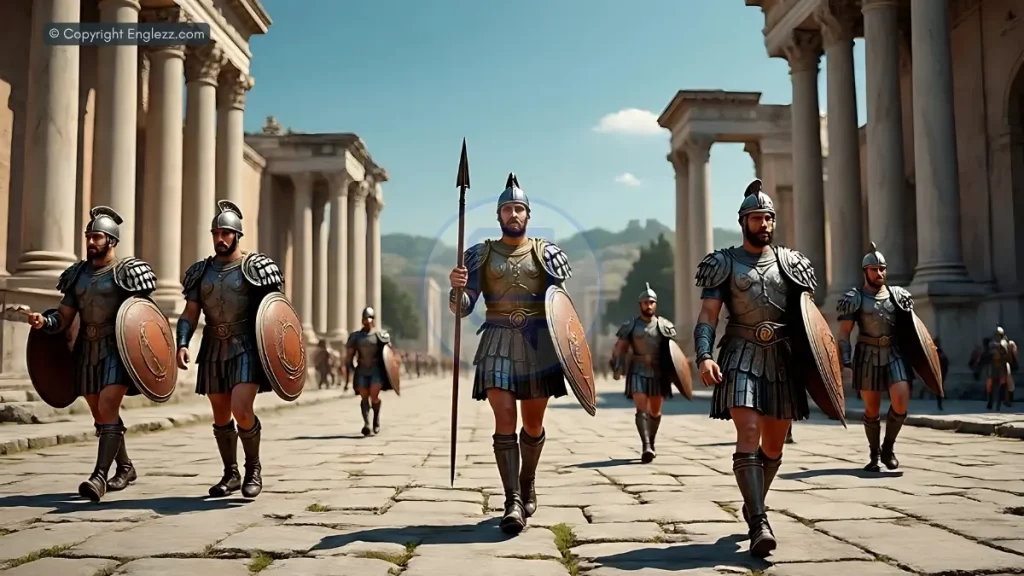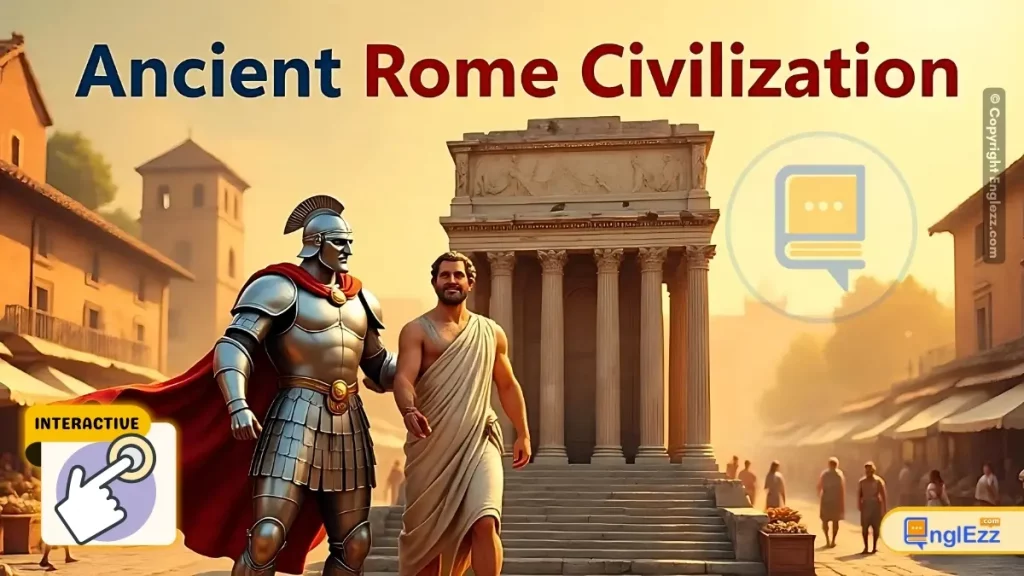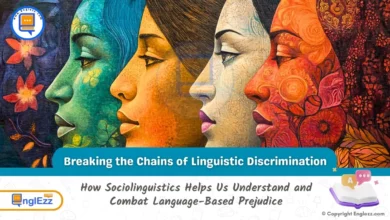
The Story of Ancient Rome
From Kingdom to Empire to Legacy
Introduction
The Roman Journey
The story of Ancient Rome is one of remarkable transformation—from a small settlement on the Tiber River to a vast empire that dominated the Mediterranean world. This journey spans over a millennium of struggle, innovation, conflict, and cultural achievement that shaped Western civilization.
Rome emerged from diverse influences: Etruscan kings, Latin neighbors, and Greek colonists. Through revolution, civil war, imperial expansion, and eventual decline, the Romans continually redefined their political institutions and cultural identity. Their legacy includes law, language, architecture, engineering, and governance that continue to influence the modern world.
This timeline explores key events and developments in Roman history, highlighting the complex interplay of political, social, economic, and cultural forces that shaped this remarkable civilization. From the founding of Rome to the fall of the Western Empire, we trace the evolution of Roman civilization and its enduring impact on world history.
Roman Kingdom
From the legendary founding by Romulus in 753 BCE to the overthrow of the last king in 509 BCE, Rome was ruled by kings who established many of its early institutions. This period saw the development of Roman religion, the Senate as an advisory body, and the division of society into patricians and plebeians. The monarchy ended with the expulsion of the tyrannical Tarquin the Proud.
Roman Republic
The Republic (509-27 BCE) was characterized by a system of checks and balances between consuls, the Senate, and popular assemblies. The “Struggle of the Orders” gradually expanded rights for plebeians. Rome expanded across Italy and then the Mediterranean through the Punic Wars and conflicts with Hellenistic kingdoms. Internal tensions led to civil wars and the eventual collapse of republican institutions.
Roman Empire
The Empire (27 BCE-476 CE in the West) began with Augustus establishing the Principate, maintaining republican forms while concentrating power in the emperor. The Pax Romana brought relative peace and prosperity for two centuries. The empire reached its greatest territorial extent under Trajan. Later emperors faced challenges of succession, economic troubles, and external pressures that ultimately led to the Western Empire’s fall.
Explore the interactive Roman civilization timeline below to discover key events that shaped this ancient world power. Test your knowledge with our quiz when you’re ready!
Interactive Roman Civilization Timeline
Founding of Rome
According to legend, Rome was founded by Romulus on April 21, 753 BCE, after he killed his brother Remus in a dispute over where to build the city.
Read moreThe traditional date for the founding of Rome is April 21, 753 BCE, based on calculations by the Roman scholar Varro. According to legend, Rome was founded by the twins Romulus and Remus, descendants of the Trojan prince Aeneas, who were raised by a she-wolf after being abandoned as infants.
After growing up, the brothers decided to build a city but quarreled over its location. Romulus killed Remus and became the first king of Rome, establishing the city on the Palatine Hill. The early population consisted of outcasts and refugees, leading to the famous “Rape of the Sabine Women” to provide wives for the settlers.
Archaeological evidence shows that the site of Rome was inhabited as early as 1000 BCE, with settlements on the Palatine and Capitoline hills. The traditional seven kings of Rome (Romulus, Numa Pompilius, Tullus Hostilius, Ancus Marcius, Tarquinius Priscus, Servius Tullius, and Tarquinius Superbus) likely represent a combination of historical figures and legendary elements.
The Roman Kingdom established many institutions that would persist throughout Roman history, including the Senate as an advisory council, the division between patricians and plebeians, and early religious practices. The monarchy ended in 509 BCE with the overthrow of the tyrannical Tarquin the Proud and the establishment of the Roman Republic.
Further Reading
- Livy. Ab Urbe Condita (Books 1-2)
- Cornell, T.J. The Beginnings of Rome (1995)
Overthrow of the Monarchy
The last Roman king, Tarquin the Proud, is overthrown, leading to the establishment of the Roman Republic.
Read moreThe Roman monarchy ended in 509 BCE when Lucius Tarquinius Superbus (Tarquin the Proud) was overthrown in a revolt led by Lucius Junius Brutus. The immediate cause was the rape of Lucretia, a noblewoman, by Tarquin’s son Sextus. This act of tyranny sparked a rebellion that expelled the Tarquin family from Rome.
The revolution established the Roman Republic, with power divided between two annually elected consuls (initially Brutus and Collatinus) who checked each other’s authority. The Senate, which had served as an advisory council under the kings, gained greater political importance. The phrase “Senatus Populusque Romanus” (SPQR – The Senate and People of Rome) became the official designation of the Roman state.
This transition marked Rome’s rejection of hereditary monarchy in favor of a system that theoretically distributed power among different groups. However, the early Republic was dominated by the patrician class, leading to the “Conflict of the Orders” between patricians and plebeians that would shape much of early Republican history.
The overthrow of the monarchy became a foundational myth of Roman republicanism, celebrated for establishing liberty (libertas) against tyranny. Later Romans would look back to Brutus as a model of republican virtue, though his execution of his own sons for conspiring to restore the monarchy also demonstrated the stern morality Romans admired.
Further Reading
- Livy. Ab Urbe Condita (Book 2)
- Ogilvie, R.M. A Commentary on Livy, Books 1-5 (1965)
First Secession of the Plebs
Plebeians withdraw from Rome in protest of patrician domination, leading to the creation of the Tribune of the Plebs.
Read moreIn 494 BCE, during the early Republic, plebeians (the common citizens) staged the first of several “secessions” – mass withdrawals from the city – to protest their lack of political rights and economic hardships. The plebeians were burdened by debt and excluded from political offices and the priesthoods, which were monopolized by the patrician class.
The secession forced the patricians to negotiate, resulting in the creation of the Tribune of the Plebs, officials who represented plebeian interests. The tribunes had the power to veto actions by magistrates that harmed plebeians (intercessio) and their persons were sacrosanct (inviolable). This office became a cornerstone of plebeian political power.
This event marked the beginning of the “Conflict of the Orders,” a centuries-long struggle between patricians and plebeians that gradually expanded rights for the plebeian class. Subsequent developments included the publication of the Twelve Tables (451-450 BCE), the first written Roman law code; the opening of the consulship to plebeians (367 BCE); and the Lex Hortensia (287 BCE) which made plebiscites binding on all Romans.
The Conflict of the Orders demonstrated Rome’s ability to resolve internal tensions through compromise rather than violent revolution, though the process was often contentious. The eventual integration of plebeians into the political system helped create a more cohesive Roman society capable of unified action in foreign affairs.
Further Reading
- Livy. Ab Urbe Condita (Book 2)
- Raaflaub, Kurt. Social Struggles in Archaic Rome (1986)
Punic Wars
Rome fights three wars against Carthage, resulting in Roman dominance of the western Mediterranean.
Read moreThe Punic Wars were a series of three conflicts between Rome and Carthage that established Rome as the dominant power in the western Mediterranean. The First Punic War (264-241 BCE) was fought primarily over control of Sicily and ended with Rome gaining its first overseas province. Rome developed naval power to challenge Carthage’s maritime supremacy.
The Second Punic War (218-201 BCE) featured Hannibal’s famous crossing of the Alps with war elephants and his victories at Trebia, Lake Trasimene, and Cannae (216 BCE). Rome’s resilience under Quintus Fabius Maximus (the “Delayer”) and Scipio Africanus’s victory at Zama (202 BCE) secured Roman victory. Carthage lost its empire and became a client state.
The Third Punic War (149-146 BCE) ended with the complete destruction of Carthage under Scipio Aemilianus. The city was razed, its territory became the province of Africa, and the surviving population was enslaved. Cato the Elder’s repeated declaration “Carthago delenda est” (Carthage must be destroyed) exemplified Roman determination to eliminate their rival.
The Punic Wars transformed Rome from an Italian power to a Mediterranean empire. They demonstrated Rome’s military adaptability, political resilience, and willingness to commit vast resources to victory. The wars also introduced Hellenistic cultural influences to Rome and established patterns of provincial administration that would characterize later Roman expansion.
Further Reading
- Goldsworthy, Adrian. The Punic Wars (2000)
- Polybius. The Histories (Books 1-39)
Gracchi Reforms
Tiberius and Gaius Gracchus attempt land reforms to address economic inequality, leading to political violence.
Read moreTiberius Gracchus, elected tribune in 133 BCE, proposed agrarian reforms to redistribute public land (ager publicus) from wealthy landowners to landless citizens. His unconventional methods, including deposing a fellow tribune who vetoed his proposals, and his attempt at re-election, led to his murder by a senatorial mob.
His brother Gaius Gracchus, tribune in 123-122 BCE, expanded the reform program with measures including grain subsidies, colonies for the poor, and extending citizenship to Italian allies. His proposals threatened senatorial power and led to his death in 121 BCE when the Senate passed the “final decree” (senatus consultum ultimum) authorizing his opponents to use force.
The Gracchi brothers’ careers marked the beginning of the Late Republic’s political violence, as traditional political norms broke down. Their attempts to address the growing inequality between rich and poor, the displacement of small farmers by slave-run latifundia, and the political exclusion of non-senatorial classes highlighted tensions in Roman society.
While their reforms were largely overturned after their deaths, the Gracchi demonstrated the potential of popular politics in Rome and set precedents for later populist leaders like Marius and Caesar. Their violent deaths established a pattern of extra-constitutional conflict that would characterize the Republic’s final century.
Further Reading
- Plutarch. Lives of Tiberius and Gaius Gracchus
- Stockton, David. The Gracchi (1979)
Caesar’s Civil War
Julius Caesar crosses the Rubicon, sparking civil war against Pompey and the Senate, leading to his dictatorship.
Read moreIn 49 BCE, Julius Caesar, having completed his conquest of Gaul, was ordered by the Senate to disband his army and return to Rome as a private citizen. Facing prosecution from his enemies, Caesar instead crossed the Rubicon River with his army, declaring “alea iacta est” (the die is cast), an act of treason that began civil war.
Caesar quickly gained control of Italy while his opponent Pompey and much of the Senate fled to Greece. After defeating Pompey at Pharsalus (48 BCE), Caesar pursued him to Egypt, where Pompey was murdered. Caesar became involved in Egyptian politics, supporting Cleopatra VII in her struggle for the throne.
After further campaigns in Asia Minor (where he declared “veni, vidi, vici”) and North Africa, Caesar returned to Rome as dictator. He implemented reforms including calendar reform (creating the Julian calendar), debt relief, and colonization projects. His accumulation of powers and honors, including perpetual dictatorship, alarmed traditional republicans.
On the Ides of March (March 15) 44 BCE, Caesar was assassinated by a group of senators led by Brutus and Cassius, who saw themselves as liberators restoring the Republic. However, their act instead precipitated further civil wars that would ultimately end the Republic and lead to the establishment of the Roman Empire under Caesar’s heir Octavian (Augustus).
Further Reading
- Caesar. The Civil War
- Goldsworthy, Adrian. Caesar: Life of a Colossus (2006)
Augustus Becomes First Emperor
Octavian, later known as Augustus, establishes the Principate, marking the beginning of the Roman Empire.
Read moreAfter defeating Mark Antony and Cleopatra at Actium in 31 BCE, Octavian (Caesar’s adopted heir) became the undisputed master of Rome. In 27 BCE, he ostensibly “restored the Republic” by returning power to the Senate and people, but in reality established a new system of government called the Principate.
Augustus (a title meaning “revered” granted by the Senate) maintained republican institutions while concentrating power in his own hands. He held multiple offices including princeps (first citizen), imperator (military commander), and pontifex maximus (chief priest). The Senate granted him proconsular power over imperial provinces and tribunician power for life.
Augustus’s reforms created a stable government after decades of civil war. He reorganized the army into a professional standing force, established the Praetorian Guard, reformed provincial administration, and initiated a building program that transformed Rome into a marble city. His reign began the Pax Romana, a period of relative peace and prosperity lasting about 200 years.
Augustus carefully cultivated an image of piety, tradition, and restraint while revolutionizing Roman government. His system proved durable enough to survive incompetent emperors, though it depended heavily on the character of the princeps. The Julio-Claudian dynasty he founded would rule until Nero’s death in 68 CE.
Further Reading
- Augustus. Res Gestae Divi Augusti
- Everitt, Anthony. Augustus: The Life of Rome’s First Emperor (2006)
Empire Reaches Greatest Extent
Under Emperor Trajan, the Roman Empire reaches its maximum territorial extent.
Read moreUnder Trajan (r. 98-117 CE), the Roman Empire reached its greatest territorial extent, stretching from Britain to Mesopotamia. Trajan, the first emperor born outside Italy (in Spain), was an able administrator and military commander who expanded the empire in the east through his Dacian and Parthian campaigns.
After two wars (101-102 CE and 105-106 CE), Trajan conquered Dacia (modern Romania), gaining control of its gold mines. The conquest was commemorated by Trajan’s Column in Rome, which depicts scenes from the wars in a spiral relief. In 114-117 CE, Trajan campaigned against the Parthian Empire, annexing Armenia, Mesopotamia, and Assyria as provinces.
Trajan’s building projects included Trajan’s Forum and Market in Rome, roads, bridges (including the famous bridge across the Danube), and aqueducts throughout the empire. His reign is often considered the high point of Roman power and prestige, though his eastern conquests proved difficult to maintain and were largely abandoned by his successor Hadrian.
Trajan was respected for his just rule, military successes, and public works. The Senate awarded him the title “Optimus Princeps” (Best Ruler), and later emperors were wished to be “more fortunate than Augustus and better than Trajan.” His death in 117 CE marked the end of Rome’s major territorial expansion.
Further Reading
- Bennett, Julian. Trajan: Optimus Princeps (1997)
- Cassius Dio. Roman History (Books 68-69)
Edict of Caracalla
Emperor Caracalla grants Roman citizenship to all free inhabitants of the empire.
Read moreThe Constitutio Antoniniana (Edict of Caracalla) issued in 212 CE by Emperor Caracalla granted Roman citizenship to all free inhabitants of the empire. This marked the culmination of a centuries-long process of expanding citizenship rights beyond the original Roman community.
The edict’s motivations remain debated. Officially it was presented as a generous act, but Cassius Dio suggests it was primarily to increase tax revenue, as citizens paid inheritance taxes that non-citizens were exempt from. The edict may also have been intended to strengthen imperial unity and loyalty during a period of instability.
The practical effects were significant. All free provincials became equal before Roman law, could make legally valid wills, and had access to Roman courts. The edict accelerated the process of cultural Romanization in the provinces and reduced legal distinctions between Italians and provincials.
However, the edict also diluted the value of citizenship, which had once been a prized privilege. By Caracalla’s time, citizenship no longer carried the political rights it had in the Republic, as real power rested with the emperor. The edict reflects the transformation of Rome from a city-state to a universal empire embracing diverse peoples across the Mediterranean world.
Further Reading
- Cassius Dio. Roman History (Book 77)
- Garnsey, Peter. Social Status and Legal Privilege in the Roman Empire (1970)
Edict of Milan
Emperors Constantine and Licinius legalize Christianity in the Roman Empire.
Read moreThe Edict of Milan, issued in 313 CE by Constantine (ruling the West) and Licinius (ruling the East), granted religious tolerance throughout the Roman Empire, ending the persecution of Christians. The edict restored confiscated Christian property and allowed Christianity to be practiced openly alongside traditional Roman religion.
Constantine had already shown favor to Christianity after his vision before the Battle of the Milvian Bridge in 312 CE, where he reportedly saw a cross in the sky with the words “In hoc signo vinces” (In this sign conquer). His victory convinced him of the Christian God’s power.
The edict marked a turning point in Christian-Roman relations. While not making Christianity the state religion (that would come later under Theodosius I in 380 CE), it gave Christians legal status and imperial support. Constantine funded church construction, granted clergy privileges, and intervened in theological disputes like the Arian controversy.
The edict reflected broader religious changes in the empire, as traditional polytheism declined and monotheistic religions gained influence. Constantine’s conversion had profound consequences for the development of Christianity, linking it with imperial power and shaping its institutional structure. The alliance between church and state would characterize much of European history for centuries to come.
Further Reading
- Eusebius. Life of Constantine
- Lenski, Noel. The Cambridge Companion to the Age of Constantine (2006)
Fall of Western Roman Empire
Romulus Augustulus, last Western Roman Emperor, is deposed by Odoacer, traditionally marking the end of antiquity.
Read moreIn 476 CE, the Germanic commander Odoacer deposed Romulus Augustulus, the last Western Roman Emperor, and sent the imperial insignia to Constantinople, declaring that the West needed no separate emperor. This event is traditionally considered the end of the Western Roman Empire and the beginning of the Middle Ages in Western Europe.
The deposition was the culmination of decades of decline. The Western Empire had suffered from political instability, economic troubles, military pressures from migrating tribes (especially the Huns pushing Germanic peoples westward), and the growing autonomy of regional commanders. The empire had already been divided administratively, with the Eastern Empire based in Constantinople becoming increasingly dominant.
Odoacer ruled Italy as a client of the Eastern emperor, maintaining Roman administrative structures while distributing land to his Germanic followers. The Senate continued to meet in Rome into the 6th century, and Roman law and culture persisted even as political power shifted to Germanic kingdoms.
The Eastern Roman (Byzantine) Empire survived until 1453, preserving Roman traditions. In the West, the memory of Rome remained powerful, influencing medieval kingdoms, the Renaissance, and modern political thought. The “fall of Rome” was thus not a single event but a complex transformation whose causes and significance historians continue to debate.
Further Reading
- Heather, Peter. The Fall of the Roman Empire (2005)
- Ward-Perkins, Bryan. The Fall of Rome and the End of Civilization (2005)
Justinian’s Code
Emperor Justinian compiles Roman law into the Corpus Juris Civilis, preserving Roman legal tradition.
Read moreIn 529 CE, the Eastern Roman Emperor Justinian I published the Codex Justinianus, the first part of what would become known as the Corpus Juris Civilis (Body of Civil Law). This massive legal compilation, supervised by the jurist Tribonian, systematized centuries of Roman law and became the foundation of legal systems in Europe and beyond.
The Corpus consisted of four parts: the Codex (a collection of imperial edicts), the Digesta or Pandectae (a compilation of juristic writings), the Institutiones (a legal textbook), and the Novellae (new laws issued by Justinian). The work aimed to eliminate contradictions, obsolete laws, and redundancies in the existing legal corpus.
Justinian’s Code preserved Roman legal principles that might otherwise have been lost, including concepts like “innocent until proven guilty,” the right to legal representation, and the idea that laws should be based on justice and reason rather than arbitrary power. It influenced the development of canon law and became the basis for civil law systems in continental Europe and Latin America.
The Code was part of Justinian’s larger effort to restore Roman greatness, which included military campaigns to recapture western territories (notably under Belisarius) and an ambitious building program (including Hagia Sophia). While his western reconquests proved temporary, his legal reforms had a lasting impact that extended far beyond the Byzantine Empire’s borders.
Further Reading
- Justinian. Corpus Juris Civilis
- Watson, Alan. The Spirit of Roman Law (1995)
Ancient Rome Civilization Quiz
Test Your Knowledge of Roman History
Frequently Asked Questions
Common Questions About Ancient Rome
The Roman Republic (509-27 BCE) was a period when Rome was governed by elected officials (consuls, praetors, etc.) and the Senate, with power theoretically shared among different groups. The Roman Empire (27 BCE-476 CE in the West) began when Augustus established a system where ultimate authority rested with the emperor, though republican institutions continued in form.
Key differences:
- Government: Republic had shared power among magistrates and Senate; Empire had centralized imperial authority
- Expansion: Republic expanded through conquest; Empire focused on defending borders
- Military: Republic had citizen-soldiers; Empire had professional standing army
- Society: Republic had stronger class distinctions; Empire saw more social mobility
The fall of the Western Roman Empire in 476 CE resulted from a combination of factors:
- Political instability: Frequent changes of emperor weakened central authority
- Economic troubles: Inflation, heavy taxation, and reliance on slave labor
- Military pressures: Invasions by Germanic tribes and Huns
- Overextension: Empire became too large to defend effectively
- Civil wars: Internal conflicts drained resources
- Division: Split between Eastern and Western empires weakened the West
Historians debate which factors were most significant and whether it was a sudden “fall” or a gradual transformation.
Roman civilization made enduring contributions in many areas:
- Law: Development of legal principles still used today
- Engineering: Roads, aqueducts, concrete construction
- Architecture: Arches, domes, amphitheaters
- Government: Concepts of citizenship and republicanism
- Language: Latin as the basis for Romance languages
- Literature: Works of Virgil, Cicero, Tacitus, and others
- Military: Organization and tactics that influenced later armies
Christianity’s rise to dominance occurred over several centuries:
- Early persecution: Christians were periodically persecuted until the 4th century
- Edict of Milan (313): Constantine legalized Christianity
- Imperial favor: Constantine and later emperors supported the Church
- Organization: Church’s hierarchical structure helped it survive
- Appeal: Message of salvation and community attracted converts
- Edict of Thessalonica (380): Theodosius I made Christianity the state religion
- Decline of paganism: Traditional Roman religion lost influence
By the end of the 4th century, Christianity had become the dominant religion throughout the empire.
Conclusion
The Roman Legacy Endures
The story of Ancient Rome is one of extraordinary achievement and enduring influence. From its legendary founding to its transformation into a world empire, Rome shaped the political, legal, cultural, and architectural foundations of Western civilization.
Rome’s history reflects both remarkable accomplishments and profound contradictions—republican ideals alongside imperial autocracy, engineering marvels alongside brutal slavery, cultural sophistication alongside violent entertainment. These contradictions make Rome a endlessly fascinating subject of study.
Roman Civilization Key Takeaways
Foundations
The Roman Kingdom established early institutions and social divisions that would shape later development, while the overthrow of the monarchy became a foundational republican myth.
Republican Government
The Republic developed a complex system of checks and balances that inspired later democratic governments, though it ultimately collapsed under the weight of its own expansion.
Imperial Achievement
The Empire brought stability, prosperity, and cultural flourishing during the Pax Romana, while demonstrating both the benefits and dangers of centralized power.
Enduring Legacy
Even after its fall, Rome’s legal systems, language, architecture, and ideas continued to influence European and world civilization for centuries.
As we examine Roman history, we see patterns of political evolution, cultural adaptation, and the complex relationship between power and responsibility that remain relevant today. The study of Rome provides not just knowledge of the past, but perspective on enduring human challenges.
Recommended Reading About Ancient Rome
- Beard, Mary. SPQR: A History of Ancient Rome (2015)
- Gibbon, Edward. The History of the Decline and Fall of the Roman Empire (1776-1789)
- Goldsworthy, Adrian. How Rome Fell: Death of a Superpower (2009)
- Holland, Tom. Rubicon: The Triumph and Tragedy of the Roman Republic (2003)
- Scullard, H.H. A History of the Roman World 753-146 BC (1935)









